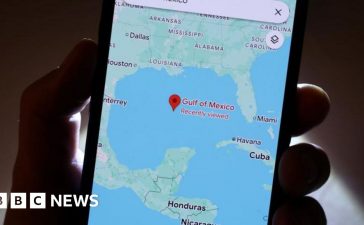Waymo and Uber — bitter enemies turned awkwardly polite work friends — announced they were expanding their two-year robotaxi partnership to two new cities: Austin, Texas, and Atlanta, Georgia, starting in early 2025.
The companies have been working together in Phoenix, Arizona, since last year — but not in California in San Francisco or Los Angeles. It’s a mutually beneficial partnership in which Waymo gets access to Uber’s vast customer base, while Uber gets to serve as a platform for a futuristic mode of transportation.
When it launches, Waymo’s robotaxis will “only” be available to hail for rides on Uber’s app in Austin and Atlanta. That means Waymo’s own ridehail app, Waymo One, will not be operational in either city. The Alphabet-owned company is currently testing its self-driving cars in both cities.
It’s a mutually beneficial partnership
Waymo employees in Austin have been using the company’s Waymo One app to hail rides as part of early testing. Waymo spokesperson Ethan Teicher said that in the following weeks, the company will invite “a limited number of early riders into the Waymo One app before fully transitioning to the Uber app next year.”
The scope of the partnership will be significantly different in these two cities than it is in Phoenix. Waymo and Uber will share the responsibilities of operating a fleet of driverless ridehail vehicles: Uber will take care of fleet management services, including vehicle cleaning, repair, and other general depot operations, and Waymo will provide the driverless vehicles while handling roadside assistance (when the robot Jaguar I-Paces inevitably get stuck) and customer service.
They will obviously share in the costs and the revenue produced by the robotaxi service, though Teicher declined to share the revenue split between the two companies.
Waymo currently operates its own Waymo One ridehail service in San Francisco, Phoenix, and Los Angeles; it recently hit the milestone of operating 100,000 rides each week in all three cities. Studies have shown that Waymo has better customer retention than human-powered ridehail services like Uber and Lyft.
The scope of the partnership will be significantly different in these two cities
The robotaxi business is difficult thanks to restrictions on where the vehicles can travel and the costs incurred by expensive hardware. Human-driven services like Uber and Lyft have no such limitations. And customers can be fickle, quick to switch to another service that promises shorter wait times and fewer limits on where they can travel.
Waymo co-CEO Tekedra Mawakana said she was “excited to launch this expanded network and operations partnership with Uber in Austin and Atlanta to bring the benefits of fully autonomous driving to more riders.” And Uber CEO Dara Khosrowshahi said he was “thrilled to build on our successful partnership with Waymo, which has already powered fully autonomous trips for tens of thousands of riders in Phoenix.”
The companies haven’t always been so full of praise for each other. In February 2017, Waymo sued Uber and its subsidiary, self-driving truck startup Otto, over allegations of trade secret theft and patent infringement. The case went to trial almost a year later but ended quickly when the two sides reached a surprise settlement agreement after just a week of deliberations.
Uber later admitted that it misappropriated some of Waymo’s tech and vowed to license it for future use. Anthony Levandowski, a former Google engineer and the founder of Otto, was sentenced to 18 months in prison for stealing Waymo’s trade secrets but was later pardoned by former President Donald Trump.
The companies haven’t always been so full of praise for each other
Uber and Waymo have a preexisting partnership involving autonomous long-haul trucking. That venture, which is still ongoing, allows fleet owners to deploy trucks equipped with Waymo’s autonomous “driver” for on-demand delivery routes offered by Uber Freight, the company’s trucking division.
Waymo also had a partnership with Lyft to deploy its robotaxis on the smaller ridehail company’s app, but that ended in 2020 during the covid-19 pandemic. And Waymo isn’t the only robotaxi company to appear in Uber’s app. Motional, which is owned by Hyundai, has its vehicles available to hail on Uber’s app in Las Vegas, Nevada.
Infamously, Uber was developing its own fleet of autonomous vehicles with the intention to eventually replace all of its human drivers, but the program was shut down after a woman was killed by one of the company’s vehicles in 2018. A federal investigation later found Uber to be partly responsible for the incident.
Correction, September 13th: A previous version of this story included the incorrect year for the Uber self-driving crash in Arizona. It was 2018, not 2017.












